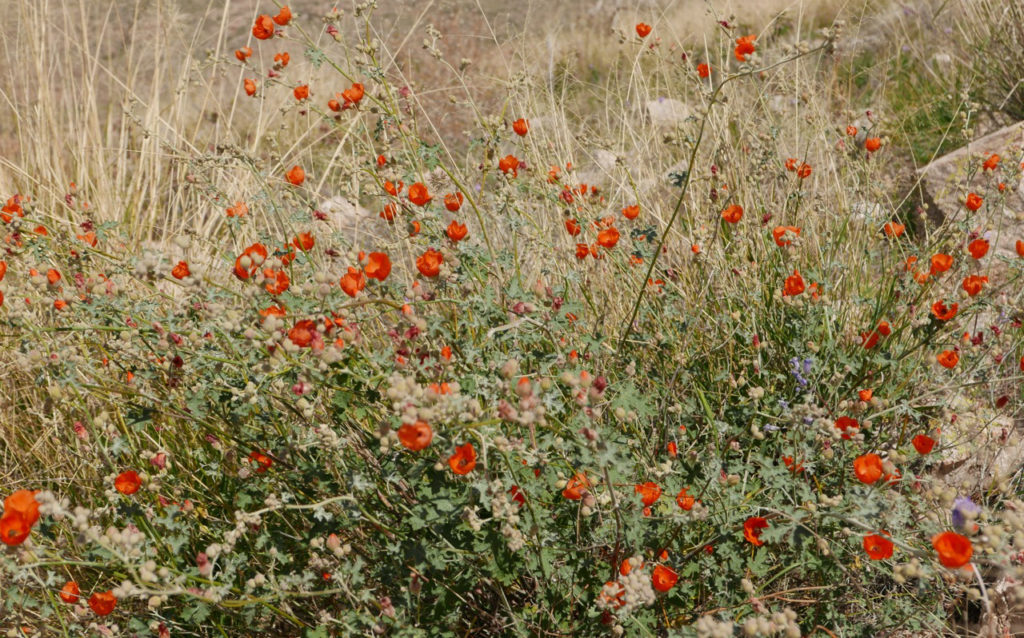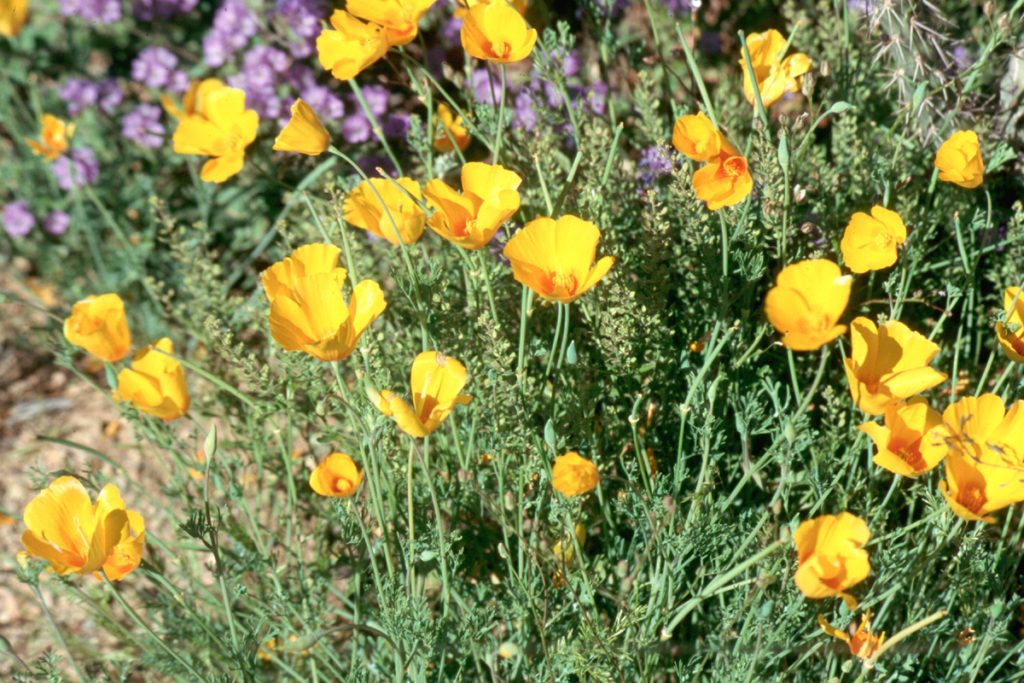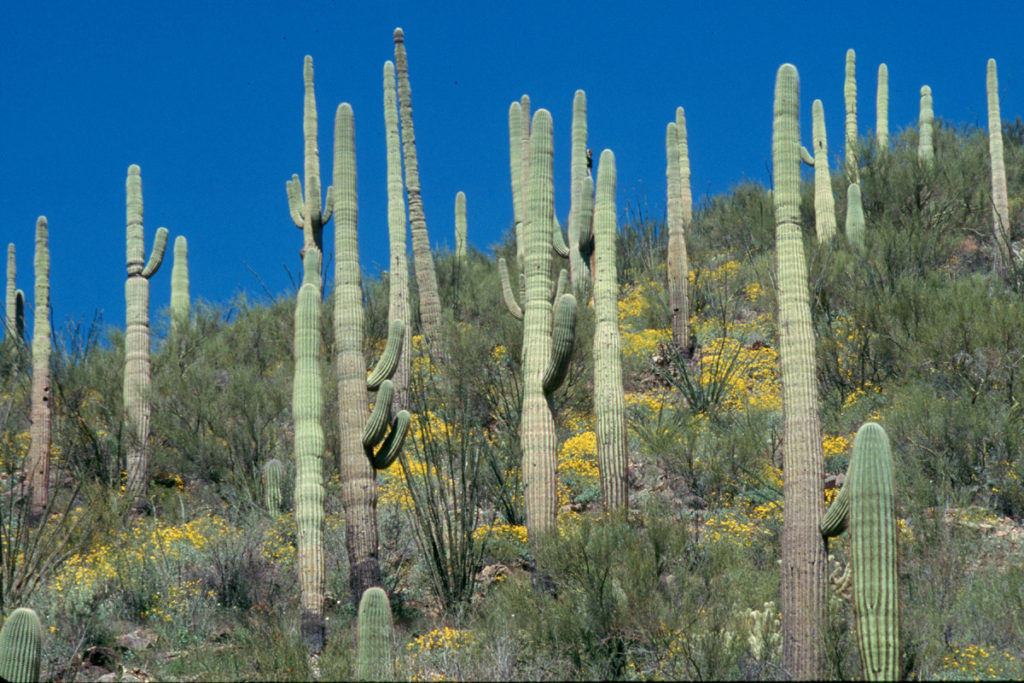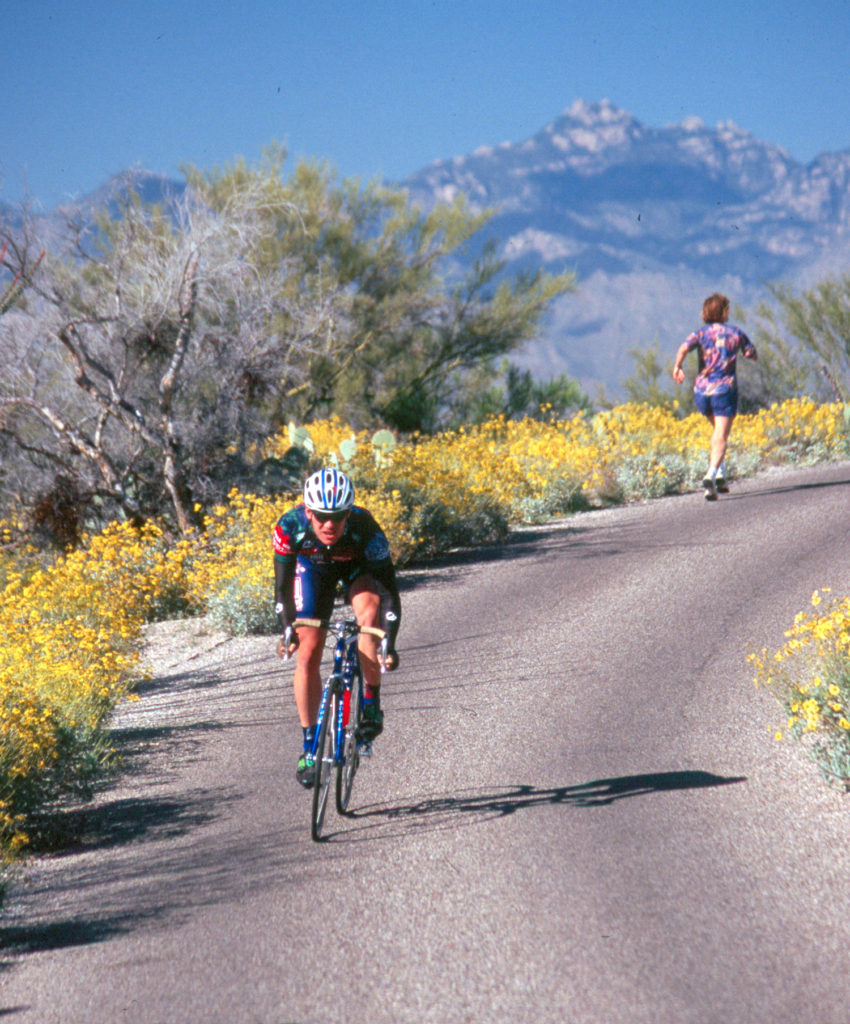
Text by Mary L. Peachin with photos by Mary L. Peachin and David Garbasz
Vol. 22, No. 8 May, 2019
Tucson, located in Southern Arizona’s Sonoran Desert, can be lush with blooming cactus and spring wildflowers. Wintertime conditions (temperature, amount of rainfall, and its timing) dictates the majestic spectacle of spring wildflowers. Typically late March and April provides the most color for desert blooms.
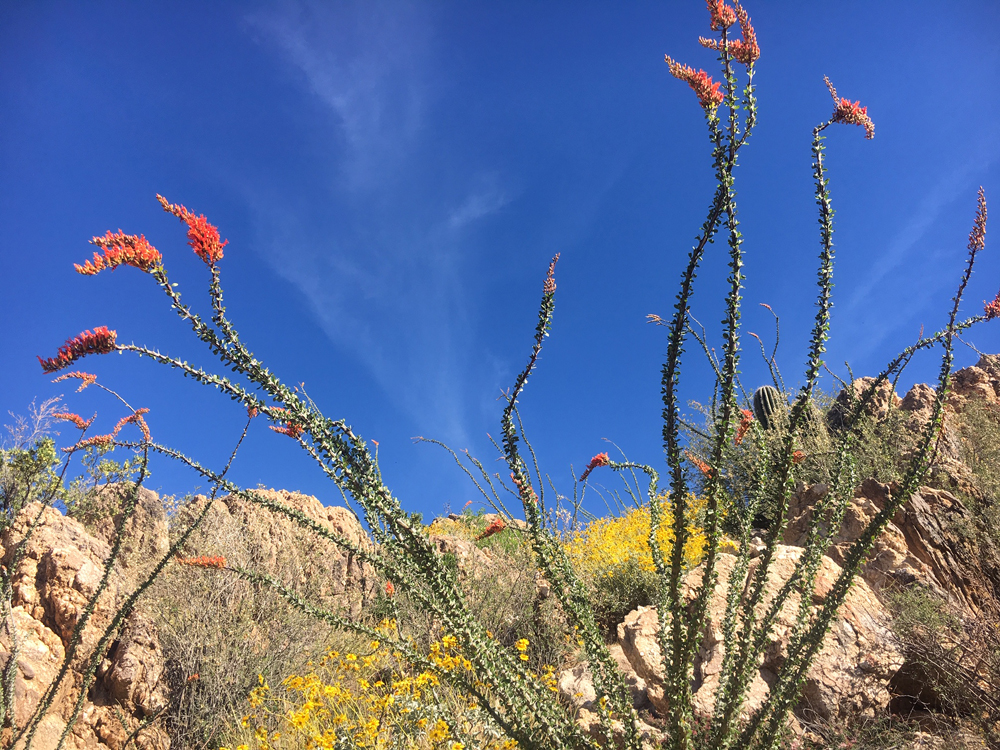
Winding through Tucson Mountain Regional Park to Sweetwater trailhead, which borders the east side of Saguaro National Park West, the dirt road curves from one scenic vista covered by majestic stands of saguaro to another.
Hiking Sweetwater Trail can easily satisfy the wildflower nature lover. During a spring desert flower bloom, this area of our Sonoran desert rates higher for its diversity of flowers and varied sizes and health of the saguaros and other cactus than Picacho State Park, Sabino Canyon, Organ Pipe National Monument, or Saguaro National Park East or West, and Romero Canyon. Sweetwater is only one of hundreds of trails to be enjoyed.
The elevation and southern sunlight exposure deserves credit for the magnificence of this lush desert garden. The abundance of brilliant, full yellow brittlebush mixed with blue lupine and fuchsia penstemon cover much of the trail.As the trail ascends the mountain, Tucson’s valley offers great views of the Santa Catalina Mountains.
The gain of elevation brings new desert flowers and cacti to enjoy. Blooming ocotillo, new pads on prickly pear, scatterings of Mexican gold poppy, more lupine, blue phacelia, fiddleneck, and paper daisy are everywhere. Apricot Globe mallow appeared to be rooted among trail side boulders.
A single yellow bloom of a prickly pear is paled by the brilliant orange color of half a dozen rare Mariposa lilies.
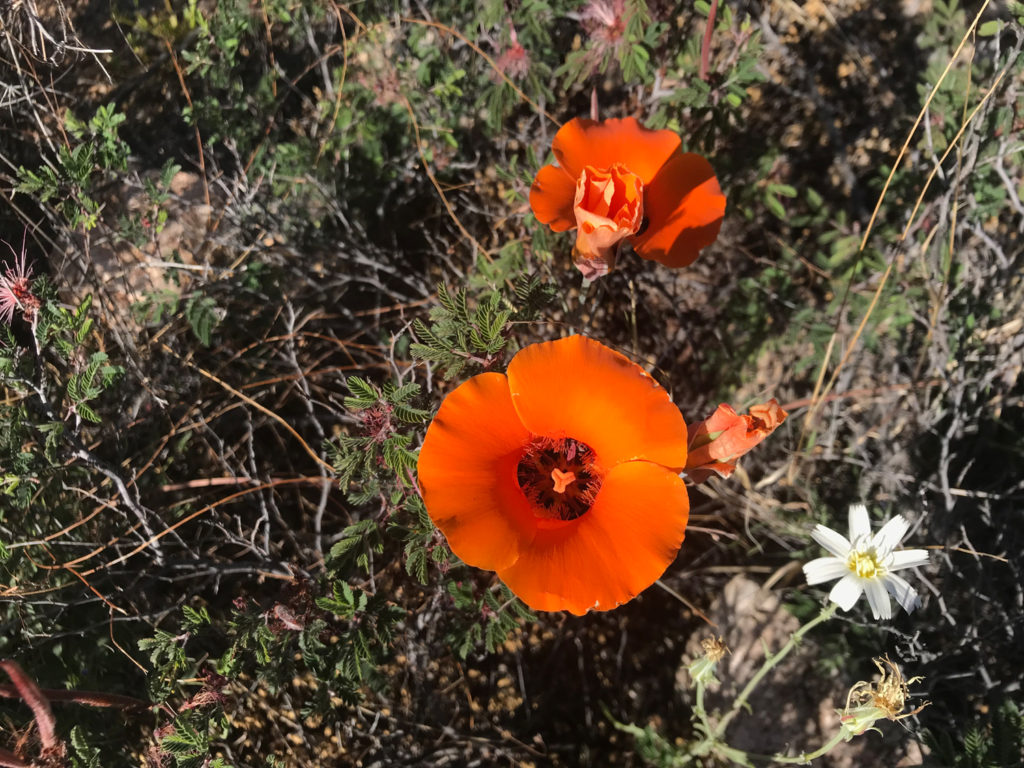
These spring flowers and the dates of their bloom are contingent on winter temperature combined with just the right amount of rainfall. For the hiker, biker, or horseback rider, timing is everything. Blooms are not consistent in different areas of the desert. If there were no flowers blooming on Sweetwater Trail, the hiking would still be exceptional. The terrain is interesting, and one can become consumed simply by the beauty of the saguaros.
White stakes saying “road closed” distract from the view along the trail. Prickly pear and cholla have been planted as an unstated warning to the hiker to stay away from the less obvious “roads” that lead to open mine shafts. Copper mines were excavated all over this area of the Tucson Mountains in the early 1900’s. The remaining shafts are a serious hazard and should not be explored.
The landscape and the terrain make Sweetwater Trail very special, but it is only one of many options to enjoy Tucson’s desert flowers. They can be viewed from Picacho Peak, almost halfway to Phoenix to Saguaro National Park East, Sabino and Ventana Canyons and others eastside destination. When there is a banner year for spring flowers, hurry into the Sonora Desert. Sadly, they are short lived and there next showing is unpredictable.
The Official Map and Guide of Saguaro National Park describes the saguaro as “The monarch of the Sonoran Desert, a prickly horror, the supreme symbol of the American Southwest, a plant with personality.”
It is renowned for the variety of odd, all-too-human shapes it assumes, shapes that inspire wild and fanciful imaginings.” It would be correct to add “majestic, magnificent, and fascinating.”
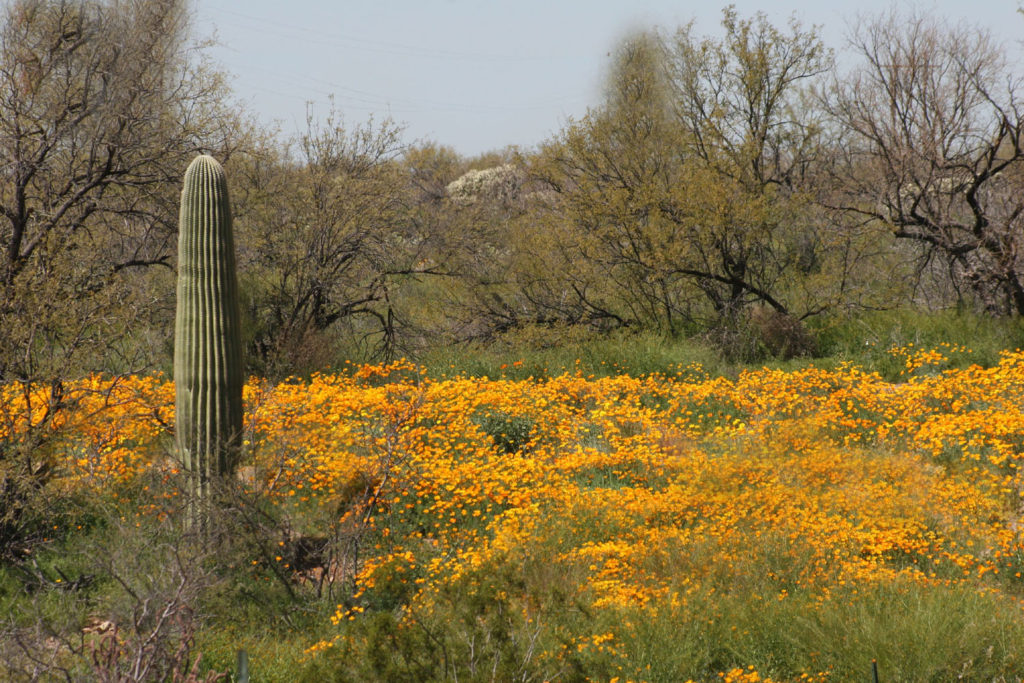
Tucson is fortunate that since 1933, this extraordinary cactus has been protected within the boundaries of East and West Saguaro National Park. The life of a saguaro is a struggle for survival.
According to the National Park Service, the saguaro’s life begins as a shiny black seed no larger than a pinhead. One mature saguaro may produce tens of thousands of seeds in a year, as many as 40 million in its two hundred year lifetime. Few of these seeds survive.
The best opportunity for survival occurs when seedlings grow under “nurse trees” like the Palo Verde or mesquite. Nurse trees shade the seeds from intense desert sunlight, winter cold and even protect them from being eaten by rodents, birds, and other animals. Saguaros grow better on bajadas, gentle plains found at the foot of desert mountains.
Growth is extremely slow and usually occurs during summer monsoons. By the end of its first year, a seedling may measure only a ¼ inch. After fifteen years the saguaro may be a foot tall. It does not produce flowers or fruit for thirty years. At the age of fifty, the saguaro may grow to seven feet. Its first branch or “arm” survives to 150 years, the saguaro may grow to fifty feet and weigh eight tons. The bulk of the cactus is supported by a strong, flexible cylinder-shaped framework of wood ribs.
These slow growing “monarchs” symbolize the magnificence of our desert and each one has its own personality for us to enjoy. By 100 years, the saguaro may have reached a height of twenty five feet.
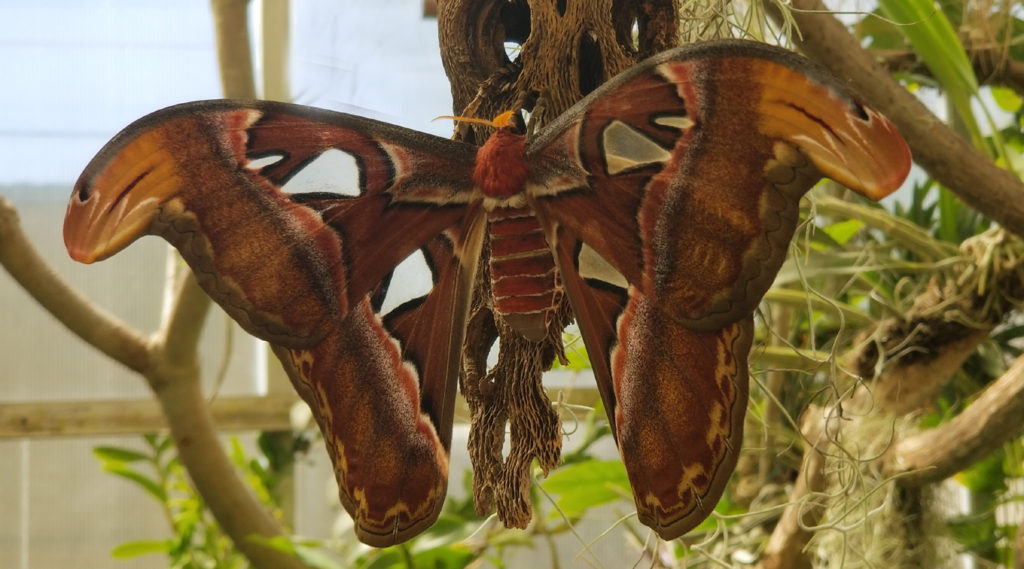
Tucson Botanical Garden
If time or other circumstances do not permit hiking Tucson’s flowering trails, a visit to Tucson Botanical Garden makes for an easier view that includes a collection of international plant and cactus specimens. At the same time, the Cox Butterfly & Orchid Pavilion greenhouse offers an up close experience in a rainforest environment filled with gorgeous butterflies, moths, and praying mantis. The five-and-a-half-acre Garden collection features a visiting artist annually. Last year there was a Frida Kahlo exhibit, and the current one exhibits the bronze sculpture of Robert Wick featuring living plants and trees. There are toy features including a running train, and treat yourself to the food delicacies of Café Botanica.
https://tucsonbotanical.org
